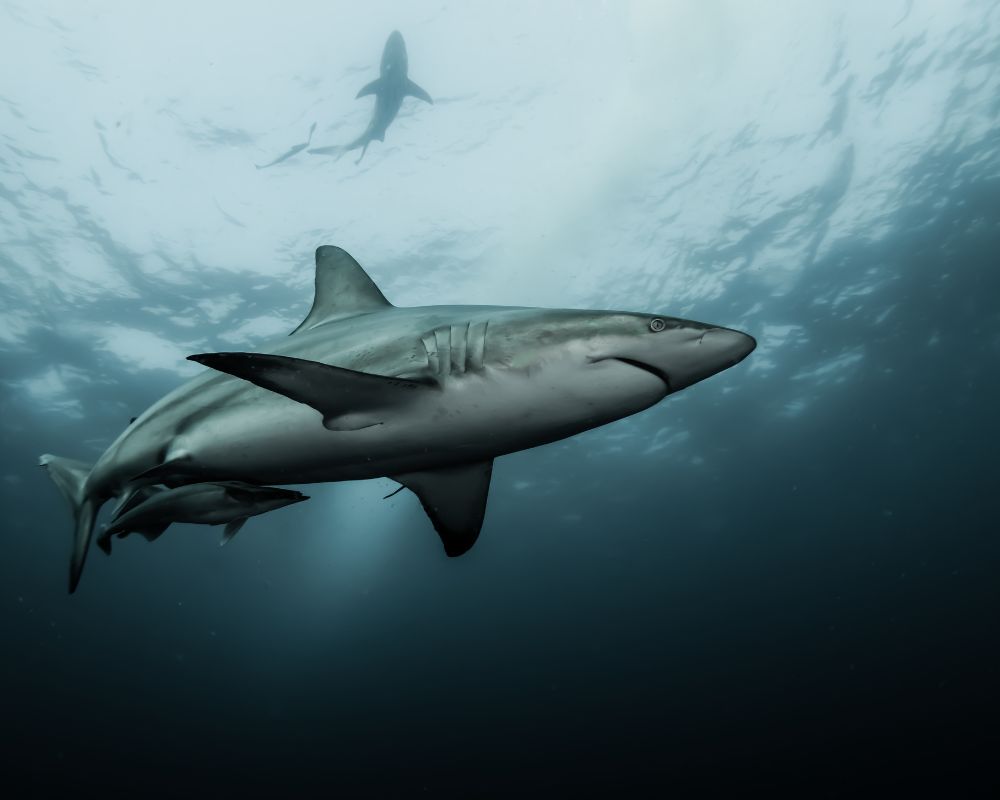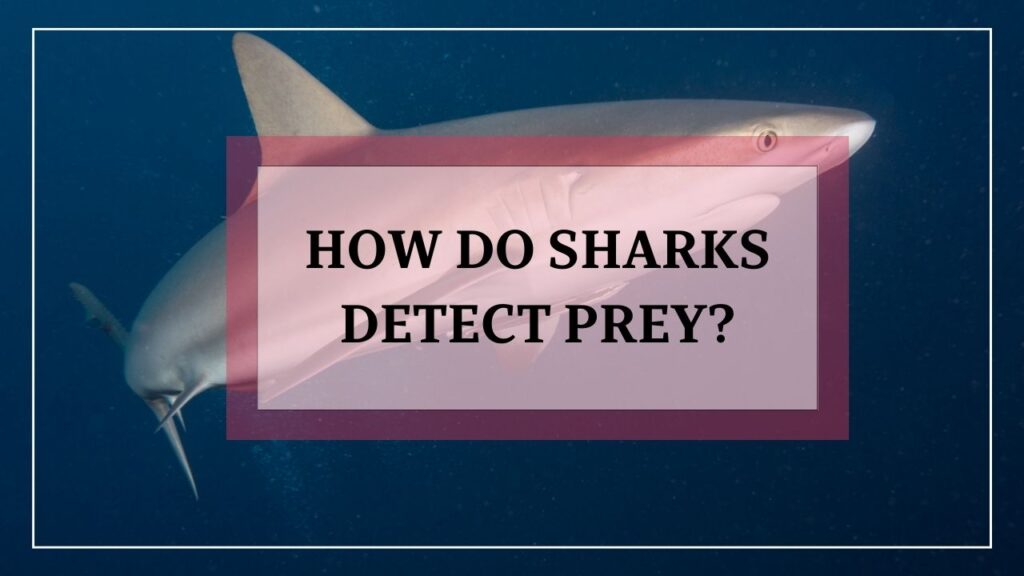Imagine being able to detect prey from miles away, even in complete darkness or murky waters. For most animals, this seems like an impossible feat, but for sharks, it’s just another day in the life of an apex predator. As fascinating creatures that have captured our imaginations for decades, sharks continue to amaze us with their unique abilities. One of the most intriguing aspects of their behavior is their uncanny ability to detect prey with incredible precision.
In this blog post, we’ll dive into the world of shark prey detection and explore the fascinating ways in which these apex predators are able to find food.
We’ll explore the different senses that sharks use to detect prey, including their vision, olfaction, electro-sense, and hearing. We’ll also delve into the behavioral adaptations that sharks have developed over time to improve their hunting success. So, let’s dive in!
The Senses of Sharks

Sharks are apex predators that have evolved an impressive array of sensory abilities to locate prey. The main senses that sharks use for prey detection include vision, olfaction, electro-sense, and hearing. Let’s take a closer look at each of these senses and how they contribute to the shark’s ability to detect prey.
Overview of the Shark’s Senses
Sharks possess a suite of sensory adaptations that allow them to detect prey from long distances. These adaptations include highly sensitive organs, such as their eyes, nose, and ears, as well as specialized sensory structures that detect electrical fields and pressure changes.[1]
Vision
Vision is one of the most important senses that sharks use for prey detection. Sharks have evolved eyes that are adapted to their environment, with a high sensitivity to light, even in low-light conditions. They also have a unique adaptation in the form of a tapetum lucidum, a reflective layer behind the retina that enhances their ability to see in low-light environments.
Sharks rely on visual cues to locate their prey, such as shadows, silhouettes, and movement. Some species, like the great white shark, have an excellent sense of color vision, while others, like the hammerhead shark, have a more limited range of color vision.
Olfaction
Olfaction, or the sense of smell, is another critical sense that sharks use to detect prey. Sharks have an impressive sense of smell, with some species able to detect one drop of blood in 100 liters of water.
Sharks have specialized olfactory organs called olfactory rosettes, which are located inside their nostrils. These rosettes are highly sensitive to chemical cues in the water, allowing sharks to detect the scent of prey from long distances.
Electrosense
Electrosense is a unique sense that allows sharks to detect the electrical fields produced by other animals. Sharks have specialized organs called ampullae of Lorenzini, which are tiny electroreceptors located in their snouts. These receptors can detect electrical fields in the water, such as those produced by the movement of prey.
Electrosense is particularly important for sharks that hunt in murky waters, where visual cues are limited. It also allows some species to detect the electrical fields produced by the muscles of prey, even when they are hiding or buried in the sand.
Hearing
Finally, hearing is another important sense that sharks use to detect prey. Sharks have a highly sensitive inner ear, which allows them to detect low-frequency sounds produced by the movement of prey or other animals in the water.
Some species of sharks, like the hammerhead, have particularly acute hearing and can detect sounds from a distance of several kilometers.
Vision And Prey Detection

With a high sensitivity to light, even in low-light conditions, The eyes of sharks play a significant role in their ability to detect and locate their prey. Let’s take a closer look at how sharks use their vision to locate prey.
Anatomy Of A Shark’s Eye
Sharks have two eyes located on the sides of their head, which provide them with a wide field of view. Their eyes are oval-shaped and have a unique adaptation called the tapetum lucidum, a reflective layer behind the retina that enhances their ability to see in low-light environments.
Sharks also have a high density of rod cells in their retinas, which are responsible for detecting light and movement. This allows sharks to detect even the slightest movements of their prey, even in murky waters.
Color Vision In Sharks
While it was once believed that sharks were colorblind, recent studies have shown that some species have a limited range of color vision. The great white shark, for example, has been shown to have an excellent sense of color vision, while other species, like the hammerhead shark, have a more limited range of color vision.
Color vision is particularly useful for sharks that hunt in shallow waters, where the color of their prey may blend in with the environment. By being able to distinguish colors, sharks can more easily locate their prey and avoid potential dangers.
Visual Cues For Prey Detection
Sharks rely on a variety of visual cues to locate their prey, including shadows, silhouettes, and movement. They are particularly sensitive to the contrast between light and dark, which helps them to distinguish between their prey and the surrounding environment.
Some species of sharks, like the hammerhead shark, have a unique head shape that enhances their ability to detect prey. The hammer-shaped head of the hammerhead shark allows it to have a wider field of vision and more acute depth perception, making it easier to locate prey hiding in the sand.
Olfaction
Sharks have an incredible sense of smell, with some species able to detect a single drop of blood in an Olympic-sized swimming pool. Let’s take a closer look at how sharks use their sense of smell to locate prey.
Anatomy Of A Shark’s Olfactory System
Sharks have a highly developed olfactory system, which is responsible for detecting scents in the water. The olfactory system of a shark is located in the nasal cavity, which is lined with sensory cells called the olfactory epithelium. These cells are responsible for detecting scents in the water and transmitting the information to the brain.
Sharks also have two small pits on the underside of their snout called the ampullae of Lorenzini. These pits contain sensory cells that can detect electrical fields in the water, which is particularly useful for detecting the electrical fields of prey.
Chemical Signals For Prey Detection
Sharks are able to detect a wide range of chemical signals in the water, including amino acids, bile salts, and urea. These chemicals are released by fish, squid, and other marine animals, and can help sharks to locate their prey.
Sharks are particularly sensitive to the scent of blood, which is why they are often portrayed as bloodthirsty predators in movies and TV shows. While sharks are attracted to the scent of blood, it’s important to note that they are not indiscriminate killers and are more likely to investigate the scent before attacking.
Hunting Strategies Based On Smell
Sharks use their sense of smell to locate prey from a distance, often swimming up-current to detect the scent of potential prey. Some species of sharks, like the nurse shark, are known to root around in the sand with their snouts, searching for buried prey.
Sharks are also able to track the scent trail of injured or bleeding prey, which can lead them directly to their target. This hunting strategy is particularly useful for larger species of sharks, like the great white shark, which needs to conserve energy while hunting.
Electro-sense
In addition to vision and olfaction, sharks also have an incredible sense called electro sense, which allows them to detect electrical fields in the water. Let’s take a closer look at how sharks use their electro-sense to locate prey.
Anatomy Of A Shark’s Electrosense System
Sharks have specialized organs called the ampullae of Lorenzini, which are responsible for detecting electrical fields in the water. These organs are located in the head of the shark and consist of small pores that are filled with a conductive gel.
When an electric field is detected, the conductive gel inside the pore moves, generating a nerve impulse that is transmitted to the brain. This allows sharks to detect the electrical fields generated by the muscles and nervous systems of other animals in the water.
Use Of Electrosense For Prey Detection
Sharks use their electro-sense to detect the electrical fields generated by the muscles and nervous systems of their prey. This can be particularly useful for detecting prey that is hiding in the sand or mud, or for detecting prey that is too small to be seen with the naked eye.
Some species of sharks, like the hammerhead shark, have a particularly well-developed electro-sense system. This allows them to detect the electrical fields of their prey from a distance, giving them a significant advantage when it comes to hunting.
The Role Of Electrosense In Navigation
In addition to detecting prey, sharks also use their electro-sense for navigation. Sharks are able to detect the Earth’s magnetic field using their electro-sense, which helps them to navigate during long migrations.
Sharks are also able to detect the electrical fields generated by ocean currents, which can help them to navigate and find their way back to specific locations.
Hearing
While sharks are often associated with their sharp teeth and powerful jaws, they also have an impressive sense of hearing that helps them detect prey and communicate with other sharks. Let’s explore how sharks use their hearing and the anatomy of their auditory system.
Anatomy Of A Shark’s Auditory System
Sharks have a complex auditory system, with a series of inner ear structures that allow them to detect sounds in their environment. These structures include the otolith organs, which detect changes in the position of the head, and the macula neglecta, which detects vibrations in the water.
Sharks also have a specialized structure called the lateral line system, which runs along the length of their body and helps them detect vibrations and movements in the water.
Use Of Hearing For Prey Detection And Communication
Sharks use their hearing to detect sounds made by their prey, such as the movements of fish or the vibrations created by a struggling animal. Some species of sharks, like the whale shark, are filter feeders and rely heavily on their hearing to locate and capture planktonic organisms.
Sharks also use their hearing to communicate with other sharks, using a variety of sounds including grunts, growls, and squeaks. These sounds can convey information about social status, mating behavior, and territorial boundaries.
FAQs
How Far Can Sharks Sense Prey?
Sharks can sense prey from far distances, with some species being able to detect prey at distances of up to one kilometer away. Their sense of smell is particularly strong, allowing them to detect tiny amounts of blood in the water.
How Can A Bull Shark Find Its Prey Without Seeing It?
Bull sharks have a highly developed sense of electroreception, which allows them to detect the weak electrical fields produced by the muscle contractions of their prey. They also have a strong sense of smell and hearing, which can help them locate prey even in murky water or low-light conditions.
Do Sharks See Humans As Prey?
While shark attacks on humans do occur, sharks do not typically see humans as their primary prey. In most cases, shark attacks on humans are believed to be cases of mistaken identity, where the shark mistakes a person for a seal or other animal that they would normally prey upon.

Hi, I’m Ali Tarek, the founder of Animalsman. I’ve always been passionate about pets, especially dogs and cats, and I created this website to share practical tips, easy recipes, and helpful care advice for fellow pet lovers. My goal is to make pet care simple, enjoyable, and accessible for everyone. When I’m not writing or curating content, you’ll usually find me spending time with my furry friends or learning new ways to keep them happy and healthy.



